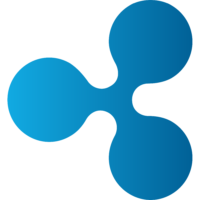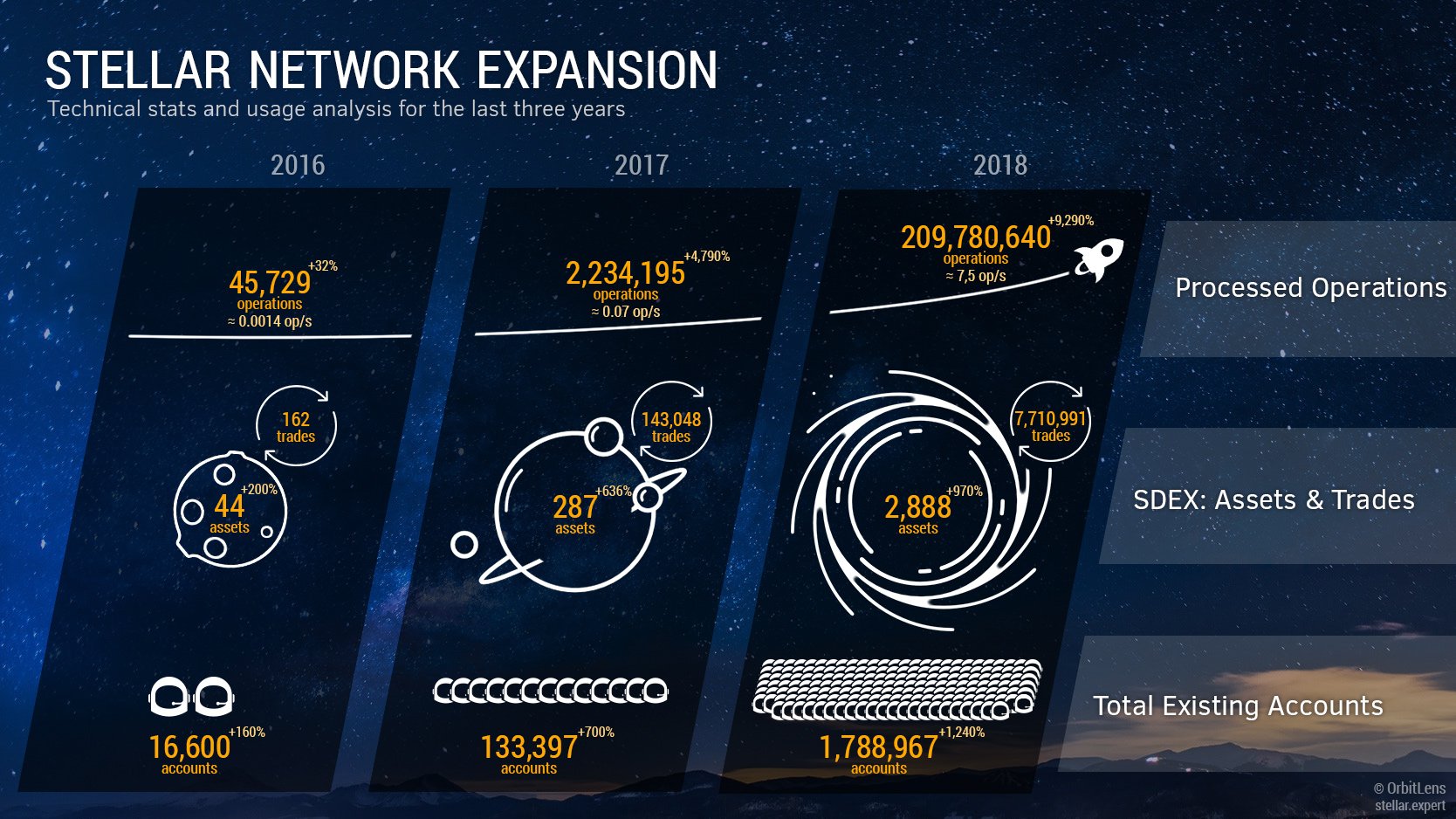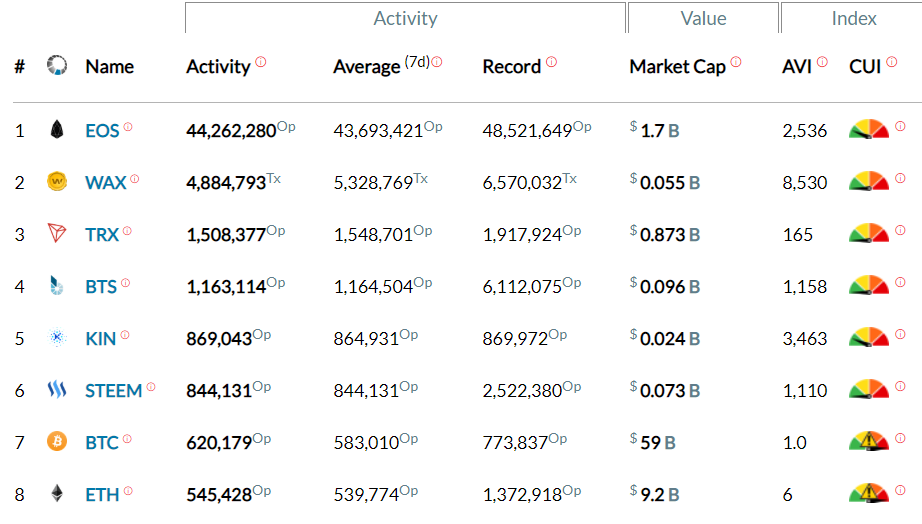Holding cryptocurrencies throughout 2018 has been a unique learning experience, to put it nicely. Comparing prices now to their all-time highs is a great way to sober up from the euphoria of late 2017. Projects have been lucky if they saw drops less than 80%, and it’s easy to find price reductions of over 95%.
While prices crawl toward their bottoms and blood continues to flow through the streets, smart money is working overtime at its day job and buying cryptocurrency at a steep discount. The key to making it to the green pastures on the other side of this bear market requires due diligence and discernment.
Remember, only 3 coins made it through the last major bear market: Bitcoin, Litecoin, and Ripple.
In my opinion, we will see the bottom sometime during 2019. Bitcoin will retain its dominance, and Ethereum will hold onto its top-of-the-platform coin spot. The parabolic rise we saw at the end of 2017 won’t happen next year, but all in all, the market will start climbing once again.
Now, a lot of the sentiment surrounding cryptocurrency is tied to the price action, and it’s easy to compare the charts with the 17th century’s Tulip Mania, but there have been some incredibly bullish fundamentals taking place around the world. Massive corporations are taking blockchain technology seriously.
From what I can tell, Bitcoin will continue to lead the market, and only projects with established ecosystems will follow it into the next bull cycle. So, Bitcoin and Ethereum aside, here are 3 coins I’m bullish on for 2019, and beyond.
Disclaimer: This is just an opinion. This article is meant to be used only as guidance and is not meant to be financial advice. There is no substitute for doing your own research and, as always, don’t invest more than you’re willing to lose.
3 Coins I’m Bullish On For 2019 (Opinion)
Ripple (XRP)

One of the most important indicators of a crypto project’s success can be seen in the partnerships they make. There’s a lot of talk about mass adoption fueling the next bull run.
The figurative rubber meets the road when a capable crypto project partners with established industry leaders. This idea will be a common theme throughout this article, and the team at Ripple has been doing an exceptional job forging relationships all over the world.
Global RippleNet Partnerships
The Ripple team has created a network of partnerships the that, according to their website, allows their users “to connect and transact across its robust network of 100+ banks and payment providers worldwide.” Some of the most notable partners so far are Western Union, MoneyGram, and BMO.
At a recent event in Dubai, Ripple executive Dilip Rao confirmed that Ripple has signed with almost 200 financial institutions around the world. While having partnerships with financial institutions doesn’t directly equate to XRP usage (and a subsequent price increase), Ripple is putting their native token in an advantageous position if they can successfully incentivize their massive network to use XRP.
Market Cap Discrepancy
Finding information on the internet is one thing, but finding out whether the source of that information is reliable is a different game entirely.
Why is this relevant to XRP? Well, it was recently pointed out to me by Cryptonary that Ripple’s market cap price differs significantly depending on which website you’re visiting. It’s unclear why there’s a difference in price evaluation, but there are rumors that last year, Korean exchange volume was removed from Coinmarketcap’s measurements.
At the time of writing, some websites put XRP’s market cap at $12.5 billion, while others put it at $31 billion (which is half of Bitcoin’s $62 billion.) At a quick glance, XRP appears to be the only top crypto with such a massive gap between reported market caps, and as the true evaluation of Ripple comes to light, a market cap adjustment in 2019 could lead to a positive price adjustment as well.
Ripple was 1 of only 3 altcoins to make it through the last major bear market. They’ve held their own, created a powerful network of partnerships in the financial world, and show no signs of slowing down.
Stellar Lumens (XLM)

Stellar Lumens was created during the 2014 bear market after Ripple co-founder Jed McCaleb broke away from the project to work on Stellar full time. Both projects are technically very similar, yet the direction of each company differs significantly.
While Ripple is a for-profit entity partnering with hundreds of financial institutions around the globe, Stellar is a non-profit business aiming to serve the globe’s unbanked population.
With a team of top technology and finance professionals, the nonprofit Stellar.org expands access to low-cost financial services to fight poverty and maximize individual potential.
— Stellar.org
Much of Stellar’s focus is on streamlining the remittance markets around the world, but the Stellar Development Foundation also allows their users to create their own ICOs, and provides a platform for developers to create dapps and decentralized exchanges (DEX).
Stellar Network Expansion
Within the conversation of crypto mass adoption, a proper use case is all the rage — and for good reason. The team at Stellar has been working hard throughout 2018 to position themselves as a legitimate partner to financial institutions all over the world.
Based on data from Stellar.Expert, a block explorer and analytics website, a powerful infographic was created (and posted below) to demonstrate not only how busy Stellar has been building the technical infrastructure of their product, but also how well it works with actual users and clients.

In my opinion, the most impressive piece of information on this chart shows the expansion of Total Existing Accounts. When you consider this data in context, it’s even more impressive. A November 2018 tweet by OrbitLens summed it up nicely:
It took almost four years to get from 0 to 1,000,000 accounts, and only two months to double the number. The network effect in action!
Stellar Lumens has a lot of good things going for them outside of this infographic as well, which more than explains the increase in activity within their blockchain. They have partnerships with big-name companies like IBM, their native currency XLM has done extremely well against Bitcoin during the current correction, and they have a powerful group of advisors.
The Stellar team has built up momentum over the last 4 years and appears to know what to do with it, which should make for an exciting year to come.
EOS.io (EOS)

EOS is a crypto platform project that allows for fast transactions on a scalable infrastructure. The project has raised quite a bit of interest, along with more than $4 billion during their year-long ICO event in 2017 and 2018.
Led by serial “cryptopreneur” Dan Larimer, EOS uses a Delegated Proof-of-Stake (DPoS) consensus algorithm, and offers optional transaction fees and recoverable accounts.
EOS catches a decent amount of flak in the crypto industry, most of the criticism focusing on the DPoS consensus algorithm at the center of the project.
Since there are only 21 block producers (who are voted in by EOS token stakers) the most common accusation is that the project is too centralized, and goes against the fundamental value that Bitcoin brings to cryptocurrencies.
As valid a point as this may be, I think we’re on the verge of discovering what blockchain technology and cryptocurrencies can do for our society, and that inevitably comes with a certain amount of experimentation. So far, the DPoS experiment has been going relatively well.
Blockchain Activity and Deep Pockets
Measuring the usage of any given blockchain isn’t cut and dry, but the website Block’tivity attempts to do so in an accurate, objective way. As far as I can tell, their methods are sound.
One way to consider a blockchain project is through its market cap. Another way, closer to the real value, is observing the activity on the blockchain.
— Block’tivity Website
While many will estimate the value of a crypto project by multiplying the last sold price with the circulating supply (market cap), Block’tivity is ranking projects based on their real-time usage. I’ll be focusing on the activity portion of the chart below. For details on what these numbers mean, check out Block’tivity’s website.

For a while, the top 3 spots were taken by all 3 of Larimer’s DPoS projects. As we move closer toward the end of Q4 2018, EOS is breaking far ahead from its competitors, showing more operations being performed in the last 24 hours than the rest of the list combined.
To add context, EOS blockchain activity was about 8 million in August 2018. In just 4 months, EOS activity has multiplied by roughly 5.5 times. On top of that, EOS.io has billions of dollars to fund dapp development on their platform.
There have been many cryptocurrencies labeled “Ethereum Killers,” but so far, EOS appears to be the only one with enough momentum to move in for the kill. While that’s outside the scope of this article, timing is everything, and Larimer seems to have had that in mind since the inception of EOS.
Final Thoughts
Although it might be tempting, now is not the time to be checking the value of our portfolios. The price has been dropping all year, yet there’s so much happening behind the scenes.
Now is the time to deepen our understanding of how markets move, what money and currency truly are, and how cryptocurrencies work. Now is the time to solidify the projects you believe in, and accumulate.

